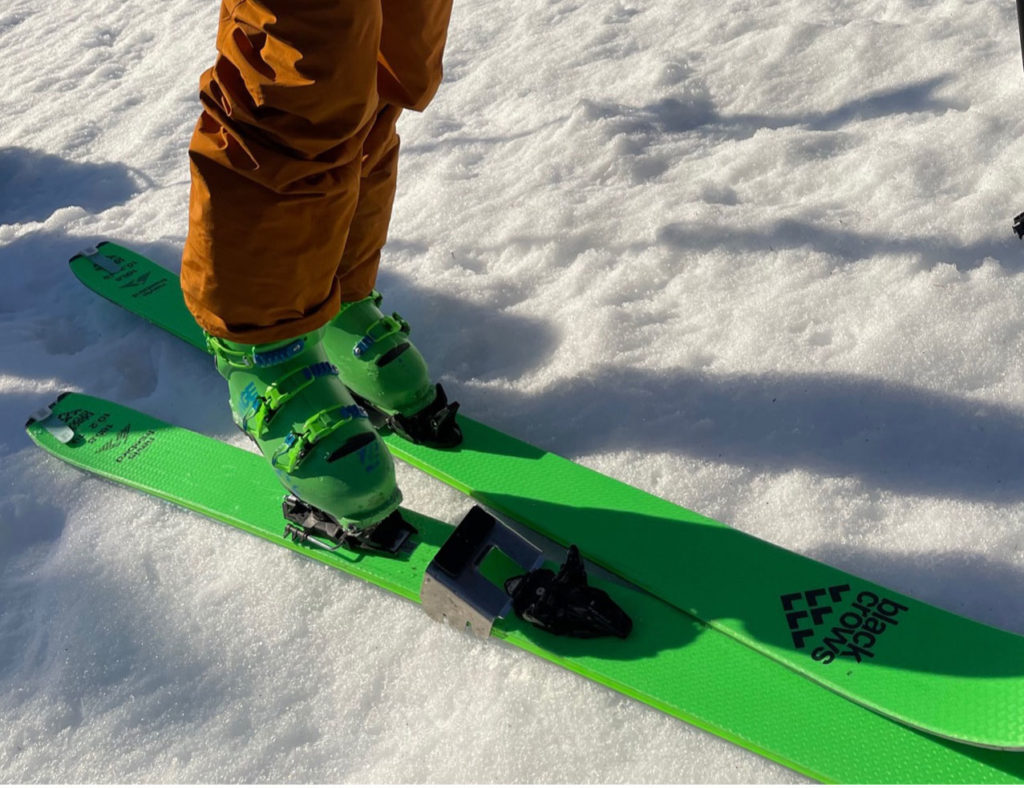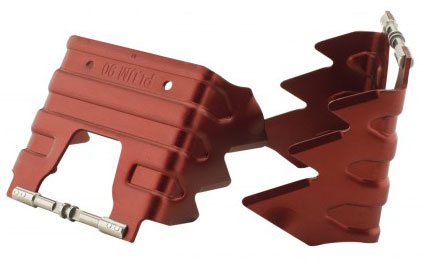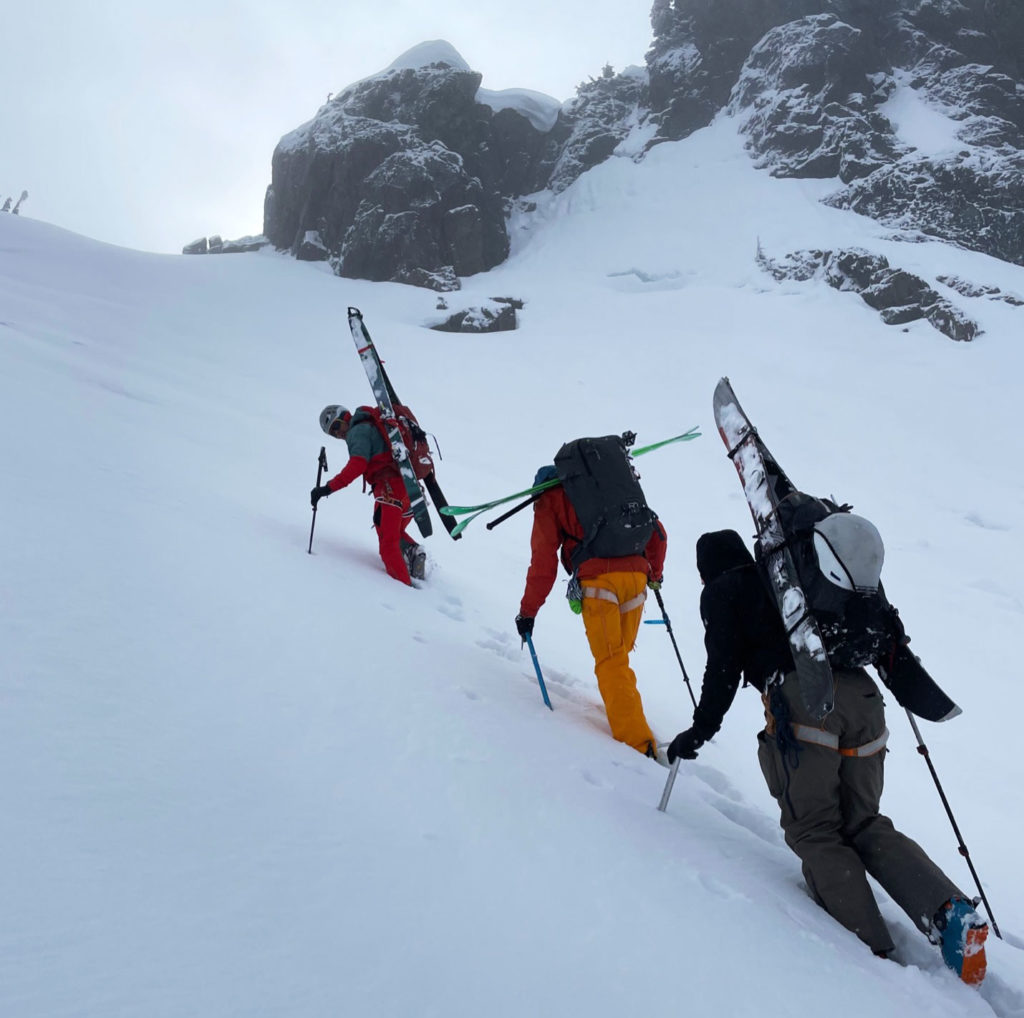- March 25, 2022
Tags
Everything You Need To Know About Ski Crampons
Ski crampons—harscheisen in German, couteaux, or “knives,” in French—are indispensable for ski mountaineering, especially on glaciers, and are considered to be part of the standard uphill travel kit by for big-mountain objectives.
However, I have heard advanced recreational backcountry skiers, guides, and equipment manufacturers ask confused questions about them throughout my career, which made me realize that many people don’t understand or appreciate their utility. I perk up to nuance like I do to the smell of coffee in the morning, so I wrote this piece to help demystify this essential piece of backcountry equipment.

What do ski crampons do for us?
Ski crampons mount to the ski binding or ski and are used in conjunction with skins. The downward blades are thin enough to penetrate the snow and wide enough to resist the snow laterally. Their primary function is to increase traction on firmer snow slopes when skin friction alone is not enough. Ski crampons can decrease the likelihood of a slip and fall down the slope and decrease physical exertion required to maintain a secure stance—much as a boot crampon does.

The chief benefit of ski crampons is that they allow us to securely stand with our skis across a firm slope without sliding. When the snow is too firm to set a track, you can find yourself standing cross-slope on your ski edges without much of your skins gripping the snow surface, therefore making it difficult to avoid slipping back down your track or down the fall line of the hill. Without crampons, skiers must steepen the track to keep more of their skins flush against the snow, making for an uncomfortable, arduous, and potentially dangerous skin. Because ski crampons prevent sliding, they allow us to set a lower-angle and more comfortable track.
Conversely, ski crampons also allow us to set a steeper track if we desire, but only in the right conditions, i.e. on spring snow early in the morning, before it turns to corn. If the snow surface is too soft, there won’t be enough resistance to add ski-parallel traction. If the snow surface is too hard, ski crampons may not be able to penetrate to full blade depth, which can actually lift skins up off the snow and cause a decrease in traction in all directions. (A word of warning about setting too-steep tracks: The crampon has better bite at lower track angles, and, on very steep tracks, the blades become more parallel to the fall line and more likely to slip dramatically—particularly during corners or kick-turns.)
Another benefit is that ski crampons allow us to ski farther before the final boot-pack to the summit. In many cases, we are safer and/or more efficient with skis on our feet than while walking in boots. Skis give us a lower foot-loading index and sink into the surface snow less than boots alone, which is why a surface crust or hard slab can often support us on skis but not in boots. Carrying skis is also heavier than sliding them forward with skins on our feet, so when we face situations where it is too difficult to skin but carrying skis is even more difficult (or more hazardous), the trusty ski crampon becomes a hero.
Ski crampons can also add safety on glaciers, where having skis on profoundly decreases our exposure to crevasse-fall hazards. (There are many situations where the likelihood of a crevasse fall is an order of magnitude greater with skis off than with skis on.) If you are without ski crampons and must bootpack up to manage the risk of sliding, you may have to rope up to manage the risk of punching into a crevasse. Using ropes while ski-touring may add safety from crevasses, but they can also create inefficiencies and hazards, which can affect safety in a broader sense. Ski crampons, on the other hand, can be used efficiently to help manage both the risks of sliding and of crevasses, potentially without the use of a rope.
Ski crampons and heel lifters
A skin that has more contact with the snow is more efficient and has better traction. Because heel lift, especially when combined with ski crampons, allows the skier to steepen the track, it gives skins more traction. (Conversely, a flat track across a steep, firm slope puts less of the skins in contact with the snow, resulting in an energy-expending sidehill slide.)
Heel lift also creates less ski-crampon drag and a more efficient stride. This can save significant amounts of energy over time and make skinning more comfortable. The heel-lift transition is among the easiest of them all, so it can be used easily to adjust the penetration of ski crampons. Keep in mind, of course, that heel lift also causes less of the ski crampon to penetrate the snow, which can affect security.
(Note that smaller boot sizes will have higher heel lift at a given heel lift setting. So what works for one skier may not work for his or her partner.)
Prepare to use ski crampons
Skinning with ski crampons probably means skinning on steep, firm slopes. Steep, firm slopes are hazardous places! A slip can quickly become a slide-for-life situation, and being in touring mode with skis on can be an impediment to self-arresting. Therefore, you should practice transitioning into ski crampons in a safe place—and practice enough so you can eventually do it safely anywhere. In steeper terrain, practice turning ski poles upside down, or using an ice axe, as a handhold. Practice removing an uphill ski first and kicking a good foothold. Consider taking out a shovel and digging a transition platform if possible.
It is also a good idea to transition proactively. Look ahead for a flatter area on the slope where the transition can be done efficiently. Some ski crampons require that the ski be removed from the boot, but with other models, ski crampons can be put on and removed with skis on feet. If you think a transition is imminent, consider clipping them to your pack so you can access them without having to take your pack off. Alternatively, plan your ski-crampon transition at a rest break, when you already plan to take your pack and skis off.
Reliability
Lastly, it is important to realize that ski crampons are not designed to be as strong and reliable as boot crampons. They are not strength-tested or standardized. They break. This is especially a problem when ski crampons are significantly wider than the ski they are on, so a good fit is important. The bottom line is we must have gear failure potential in our consciousness and be sure that we are prepared to deal with a malfunction at any time, especially because we use ski crampons in high-consequence terrain.

How does this apply to splitboards?
Splitboards in ski-touring mode are short, wide, and flimsy, which makes them less effective tools than skis for steep, firm skinning. Skilled splitboard mountaineers compensate for this with skinning technique, as we all should aspire to do. The reality, though, is that a splitboarder will typically transition to ski crampons or booting sooner than an equal skier.
Splitboard ski crampons are large and cumbersome to have accessible with a pack on, and transitions are typically more involved, so they have to be more carefully planned. Ski crampons can add security to splitboard touring in firm snow conditions, but they don’t have the same effective range of terrain and conditions, which means their use is more limited. But because a splitboard is lighter and shorter, carrying it on the pack while bootpacking has less efficiency cost.
Howie Schwartz is an IFMGA mountain guide and educator, and co-owner of Sierra Mountain Guides. He lives and adventures from his home in Bishop, Calif.


